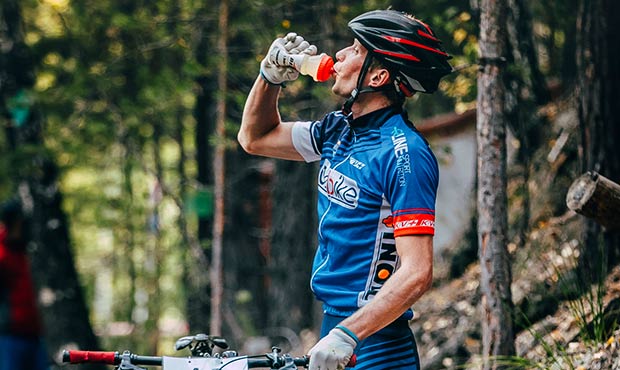
Fueling your endurance endeavors is a personal practice, and one that requires dedication and some experimentation, but nailing down a strategy that works for you doesn't need to be a shot in the dark.
Food and nutrition Events Near You
The folks from Skratch Labs share their top tips for finding a fuel and hydration strategy that works best for your body.
1. Fuel Early and Consistently
One of the biggest mistakes endurance athletes make is forgetting to eat and drink early and consistently throughout the day. While this may seem like common sense, it's often forgotten on race day—a mistake that can spell disaster no matter how well trained or prepared you are.
It's crucial that you replace at least half the calories you burn each hour, and you need to begin replacing those calories in the first hour if the race lasts more than three hours.
Regarding hydration, on a hot day, your fluid intake needs may be as high as one to two liters an hour. The best way to get an appreciation for how much fluid you might need is to weigh yourself before and after a workout. The weight you lose is primarily water weight, where a one-pound loss is equal to about 16 ounces of fluid. As a general rule, try not to lose more than three percent of your body weight over the course of your workout.
2. Eat Real Food
While there are plenty of prepackaged sports bars and gels touting their ability to improve one’s performance, it's important to realize that real food can work just as well if not better than expensive, engineered nutrition. A regular sandwich, a boiled potato with salt, a banana or a ball of sushi rice mixed with chocolate can give you the calories you need without upsetting your stomach in the way a lot of sugary gels or sports bars can.
You can find recipes for similar, all-natural alternatives in "The Feed Zone Cookbook."
3. Don't Just Drink Water
When we sweat, we lose both water and valuable electrolytes. Those electrolytes include sodium chloride, potassium, magnesium and calcium. Of these electrolytes, the vast majority (about 90 percent) of that loss is sodium chloride. Sodium plays a critical role in almost every bodily function. Thus, when sodium is lost through sweat, drinking only water can further dilute the concentration of sodium in the blood, resulting in a condition called hyponatremia, which can lead to a host of problems ranging from a drop in performance to seizures and even death.
The amount of sodium that we lose can range anywhere from 250 to 1100 mg per half liter (16.9 ounces). Because of this large range, it's always better to err on the side of caution and consume more salt versus less salt, especially if you tend to see white streaks of salt caked on your workout clothing or if you crave salt after a sweat-filled workout.
Unfortunately, most sports drinks contain too much sugar and not enough sodium, with an excess of artificial ingredients. That's why Skratch Labs created the Exercise Hydration Mix, an all-natural sports drink that uses less sugar, more sodium and is flavored only with real fruit. Outside of using a sports drink with more sodium, also consider eating salty or savory foods on your ride.



